Impuesto de Timbre para Naipes
EL CONGRESO DE COLOMBIA. LEY 69 DE 1946, por la cual se elevan las tarifas de algunos impuestos indirectos y se dictan otras disposiciones.
Impuesto de Timbre para Naipes Tax on Playing Cards
EL CONGRESO DE COLOMBIA. LEY 69 DE 1946, por la cual se elevan las tarifas de algunos impuestos indirectos y se dictan otras disposiciones:

ARTICULO 9o. Elévase a cuarenta centavos ($0.40) el impuesto de consumo sobre cada baraja de naipes de producción nacional o extranjera, que no exceda de cincuenta y dos (52) cartas. Todo excedente pagará como si se tratara de una baraja completa. Este aumento no comprende las barajas de naipes miniatura, usadas comúnmente como propaganda comercial. Translation: the tax on playing cards is raised to 40 centavos, for both imported and home-manufactured packs which do not exceed 52 cards. This does not include miniature playing-cards which are commonly used for advertising.
An earlier law had set the ‘Impuesto de Consumo’ tax at 20 centavos, when the tax bands were printed by Litografia Nacional de Bogotá (right). Later ‘Impuesto de Timbres para Naipes’ tax bands (below) were printed by Thomas de La Rue de Colombia S.A. Packs carried these adhesive tax bands around the outer wrapper, or box. No distinction is made between Spanish-suited packs or 'French' suited ones.
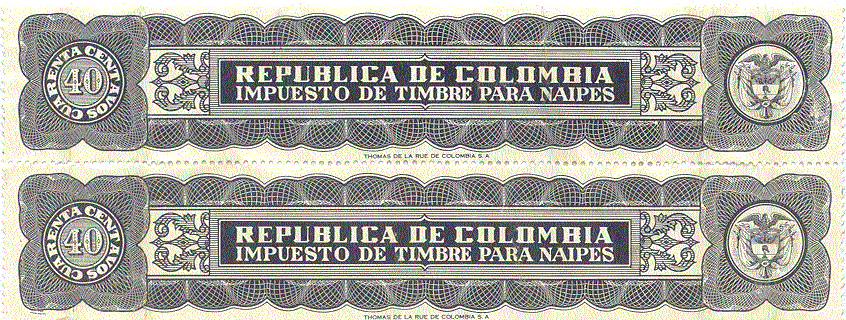
Above: two 40 centavos tax bands printed by Thomas de la Rue de Colombia S.A. attached around a 40-card pack of 'Canta Claro' playing cards. Image courtesy Peter Endebrock. For further information about tax on Colombian playing cards, see Peter Endebrock's Taxes and Tax Stamps on Playing-cards and also Enrique García Martín, 2001, page 77.
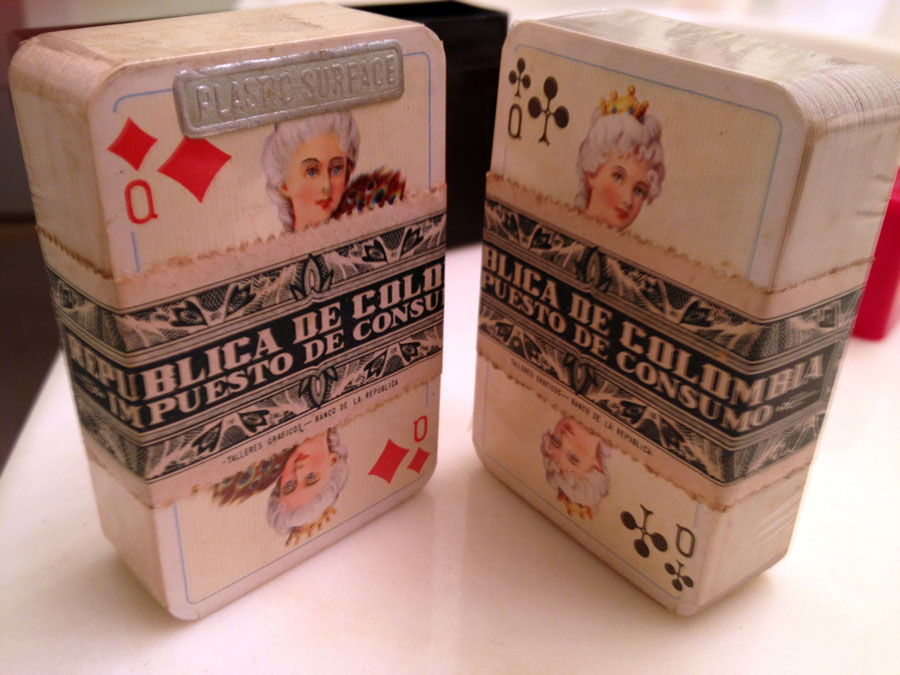
Above: 'Impuesto de Consumo' tax band printed by Talleres Gráficos - Banco de la República attached around imported cards. Image courtesy Mike Sirois.
By Simon Wintle
Spain • Member since February 01, 1996 • Contact
I am the founder of The World of Playing Cards (est. 1996), a website dedicated to the history, artistry and cultural significance of playing cards and tarot. Over the years I have researched various areas of the subject, acquired and traded collections and contributed as a committee member of the IPCS and graphics editor of The Playing-Card journal. Having lived in Chile, England, Wales, and now Spain, these experiences have shaped my work and passion for playing cards. Amongst my achievements is producing a limited-edition replica of a 17th-century English pack using woodblocks and stencils—a labour of love. Today, the World of Playing Cards is a global collaborative project, with my son Adam serving as the technical driving force behind its development. His innovative efforts have helped shape the site into the thriving hub it is today. You are warmly invited to become a contributor and share your enthusiasm.

Leave a Reply
Your Name
Just nowRelated Articles
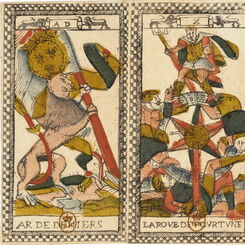
The Parisian Tarot
The “Parisian Tarot”, early 1600s, with imagery and design synthesizing several influences.

73: Fakes, forgeries and Tax Evasion
When there are oficial taxes to pay, people will find a way to avoid paying them - often illegally. ...
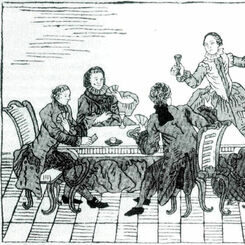
Russian Playing Card History - From the Beginnings to 1917
An in-depth review of the history of card-playing, gambling, legislation, manufacture and taxation o...
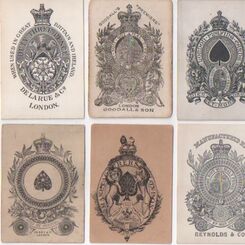
72: The Ace of Spades
In standard English packs the Ace of Spades is associated with decorative designs. This is a histori...
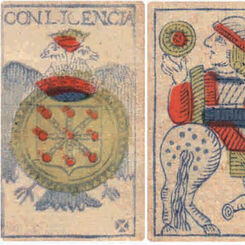
Navarra Pattern, 1793
Navarra pattern by an unknown cardmaker with initials I. I., 1793.
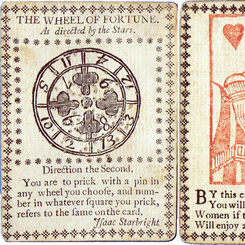
Fortune Telling playing cards
English Fortune Telling cards probably published c.1770.
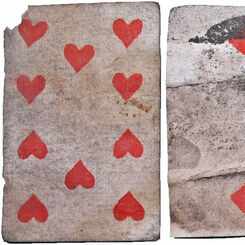
Archaeological find: old playing cards under the floorboards
The municipal archaeological service in Dordrecht (Netherlands) recently found some antique playing ...
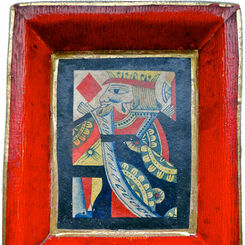
Pope Joan Trays
Some traditional Pope Joan boards comprise a circular tray, others are square, divided into sections...

Playing Cards & Gaming
Soon after their first appearance in Europe we hear of playing cards being banned by the authorities...

Netherlands
Playing cards have been known in the Low Countries since the 14th century

Fours of Cups
Over the years the company evolved, and changes in the company's name and address can be seen reflec...

History of Blackjack
Over the years the origin of Blackjack, like many other games, has eluded researchers for a long tim...

History of Online Casinos
Online casinos appeared shortly after the internet became a more mainstream tool for the public to u...

Colombia
Colombian playing cards.
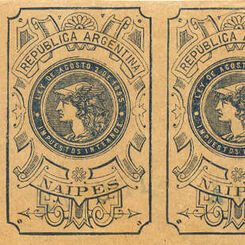
Impuestos Internos Sobre Naipes
Duty was first introduced on playing cards in Argentina in 1892, as part of the Internal Duties law,...

Argentina Tax Stamps on playing cards 1895-1968
Argentina Tax Stamps on playing cards 1895-1968
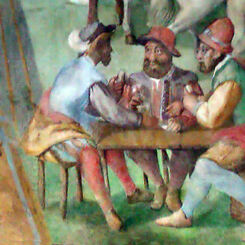
Italian Playing Cards
The first reliable evidence that playing cards were being used in Italy is from 1376, when a game ca...

History of English Playing Cards & Games
The History of English Playing Cards dates probably from the mid 15th century
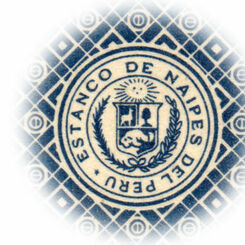
Estanco de Naipes del Perú
In October 1888 the Republic of Peru Congress passed Law no.26 establishing taxes on playing cards, ...

Uruguay playing card tax
In 1806 the Council of Concepción del Uruguay imposed an 8 Peso tax on card and billiard tables on a...
Most Popular
Our top articles from the past 60 days


 Your comment here. Your comment here. Your comment here. Your comment here. Your comment here. Your comment here. Your comment here. Your comment here. Your comment here. Your comment here. Your comment here. Your comment here. Your comment here. Your comment here. Your comment here. Your comment here. Your comment here. Your comment here. Your comment here. Your comment here. Your comment here. Your comment here. Your comment here. Your comment here. Your comment here. Your comment here. Your comment here. Your comment here. Your comment here. Your comment here. Your comment here. Your comment here.
Your comment here. Your comment here. Your comment here. Your comment here. Your comment here. Your comment here. Your comment here. Your comment here. Your comment here. Your comment here. Your comment here. Your comment here. Your comment here. Your comment here. Your comment here. Your comment here. Your comment here. Your comment here. Your comment here. Your comment here. Your comment here. Your comment here. Your comment here. Your comment here. Your comment here. Your comment here. Your comment here. Your comment here. Your comment here. Your comment here. Your comment here. Your comment here.




















